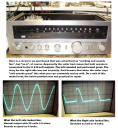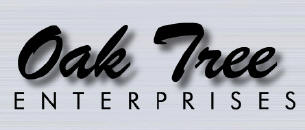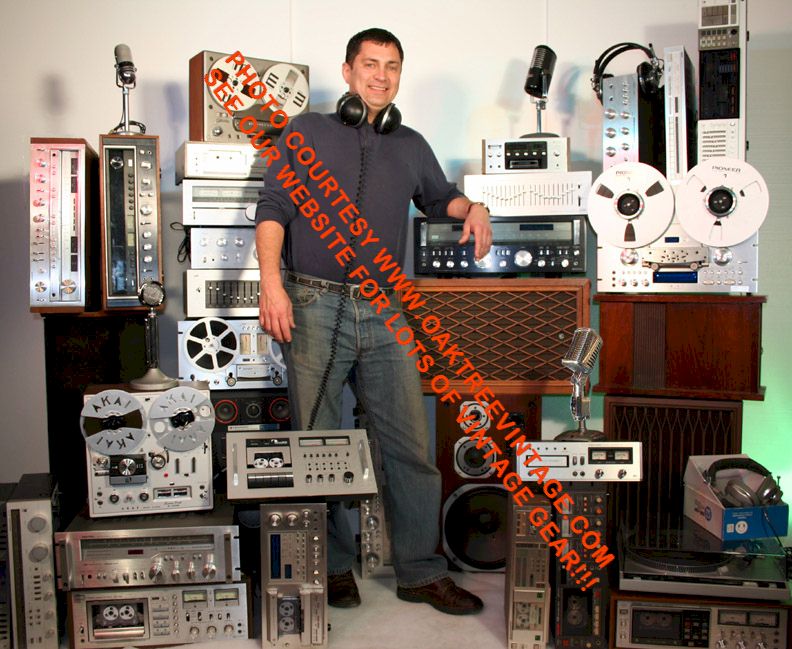|

|
PRE-OWNED, HOME-THEATER RECEIVERS
|
|
|
PAGE UNDER CONSTRUCTION
|
|
|
Did you know?
What is the difference between a ‘Tuner’ and a ‘Receiver'?
A ‘Tuner’ is the component or
aspect of an audio system that receives or ‘Tunes-In’ Radio Stations.
A 2-channel, stereo ‘Receiver’ is really 3 units in one!
It’s a ‘Tuner’ for receiving radio stations. It’s a ‘Pre-Amp /
Control-Amp’ for source / input selection & tone / audio signal
modification (with likely the phono 'pre-amp / head-amp' built-in).
Lastly it’s a ‘Power Amplifier’ to energize your speakers. It's
essentially the 'heart' of most audio / stereo systems.
Some manufacturers would silk-screen 'Tuner-Amplifier' on
the front of their receivers, but that was / is simply 'marketing' to make it sound as if it's something more complicated. It's still
a 'receiver'. Just FYI.
|
|
|
|
Did you know?
While
the company 'Pioneer' was officially established in 1961, the founder was
actually developing speakers as early as 1937. In 1962 Pioneer marketed the
worlds first 'separate component' stereo system for the home, and in 1975,
the worlds first 'component system' for the car. In 1984 they introduced the
first CD player for the automotive use (and I was selling it then). Pioneer
had many other 'firsts' and continue to be a major 'player' in consumer,
professional and industrial electronics.
|
|
|
Did you know?
A SUPER LOW DISTORTION RATING COULD LIKELY BE A BAD
THING!...
THD
(Total Harmonic Distortion) – THD is a measure of the how much a given audio
device may distort a signal through the inevitable introduction of added
harmonics or overtones. These figures are usually given as percentages. THD
figures below approximately 1% are inaudible to most people (although market
promotion efficiencies have 'brain-washed' much of the 'audio-public' into
weighting low THD with almost 'holy grail' importance. I remember some
manufacturers touting numbers as low as <0.003% in the early Eighties). Low
THD is not always an indication of a high quality amplifier. In fact, it is
/ was more commonly just the opposite. Some of the 'highest end' (read
REALLY expensive) and certainly best sounding units will have distortions
somewhere between .1% & 1%.
Low THD is only a simple 'bi-product' of 2 aspects. The first was an
inordinate and increasing amount of 'global / negative feedback' built into
amplifiers primarily to suppress distortion. This practice started to occur
in the late 1970's and certainly was in 'full force' past the early 1980's
for most 'main stream' consumer-grade audio amplifiers. Unfortunately this
also 'suppressed' tone and 'punch' (musicality) but it made the numbers look
good to the 'spoon fed' consumer (kind of like overly high speaker wattage
numbers, and sorry if you're in that group and, most folks were so you're
not alone). Secondly manufacturers were moving away from
'discrete-transistor' output designs to more 'monolithic' 'power-pack'
output designs. While these designs reduced power supply requirements, thus
reducing parts costs and weight (also translates to lower prices due to
savings on freight from Asia) they generally sounded anywhere from somewhat
'anemic' compared with the designs from a few years previous, to completely
'gutless' and 'un-musical'. But, hey,… they had very low distortion
figures….Can anyone say 'threw the baby out with the bath water'?
Excerpts of the above text from one of
the best Car Audio sites and stores in the world, 'Car-Fi'
www.car-fi.com .
|
|
|
|
|
|
So, why do the older / 'vintage'
receivers and amplifiers sound so much better (for music) than the much
more modern and fancier, 'surround sound - 5.1', '7.1', or '8.BR549' A/V
receivers?
Mostly due to Amplifier design and 'Amplification Classes' - All sound is
a sinusoidal waveform. It has alternating peaks and valleys. The center
point of each wave is the zero, or switching point that separates the
positive (top) from the negative (bottom) portion of each wave. When a
amplifier operates in Class A , the output tubes or transistors amplify
the entire waveform without splitting it into positive and negative
halves. In Class AB, used in the majority of classic receiver /
amplifier designs, the signal is split into two halves, positive and
negative, and each half is sent to a tube or transistor circuit for
amplification. Both sides work in tandem, and the two halves are
recombined at the output section to reconstruct the whole signal. This
technique increases the amount of power that can be applied, but
increases distortion.
In many 'modern' A/V and subwoofer amps, 'Class-D' is the dominant
design method. Class D operation is essentially a rapidly switching
power amplifier. Here the output devices are rapidly switched on and off
at least twice for each cycle. Theoretically, since the output devices
are either completely on or completely off they do not dissipate any
power, greatly increasing efficiency and lowering manufacturing cost
thru lesser parts and lighter freight weight. Not musically the best
sounding design for listening to standard, 2-channel music (Radio,
Vinyl, CD'S, DAT, Tape (not 'crappy' compressed, MP3 formatted files),
but popular for 'A/V-Surround-Sound' systems for reproducing 'movie
sound tracks' (not too difficult to do from a 'sonic quality
standpoint') where slightly elevated levels of distortion are tolerated
and for subwoofer use where maximum power is necessary, and slightly
elevated levels of distortion are also easily tolerated.
Excerpts of the above text from one of
the best Car Audio sites and stores in the world, 'Car-Fi'
www.car-fi.com .
|
|
|
|
|
What is a 'Receiver' and how is it
different than a 'Tuner' or an 'Amp'?
The term 'Receiver' refers to a combined unit consisting of at least 3
aspects incorporated into one. The 3 basic units are the AM/FM 'Tuner'
or radio, a 'Pre-Amplifier' / 'Control-Amp' and a 'Power-Amplifier' all
combined in one 'box'. Originally the general consensus was that
'receivers' did not perform as well as 'separates' and were sonically
inferior. While this may have been the case early on, as in the late
1950's to early '60's, technology improved quickly and by the mid-late
60's the arguments for separates over receivers for most 'mid-level'
consumer Hi-Fi applications were generally without merit. For 95% of
home-audio listeners, a receiver will be more than ample.
|
|
Click
here for our Restoration Procedures

|
|
- |
- |
|
|
|
|
- |
|
SOLD ITEMS BELOW |
CLICK HERE TO SEE OUR ARCHIVE OF
SOLD RECEIVERS.
WE WILL LIKELY GET MORE OF THEM AGAIN!!!
|
|
|
Did you know?
Sansui was founded in 1947, just after WWII as a company manufacturing
transformers (one of the most important components of any audio system).
During the Sixties they morphed into what would become one of the most well
respected companies in quality audio gear. I have owned and sold some
incredible Sansui stereo gear from the Seventies and early Eighties. I
worked at a Sansui dealer in the early part of the Eighties. Sansui remained
a major force in stereo gear until about the mid Eighties, when the vast
majority of audio gear started suffering from the 'how cheaply can we get
it' syndrome by consumers, thus manufacturers followed suit, by building
cheaper and cheaper gear.
|
|
|
|
|
|
|
|
|
|
|
|
|
|
|
|
|
|
We've moved the
"SOLD
/ ARCHIVED"
items to their own page.
Click ........HERE.
|
** "(actual as measured)" refers to original test results done by
Hirsch-Houck Laboratories upon test release of product when new. Current
"aged" specifications / performance may of course vary from that.
|







